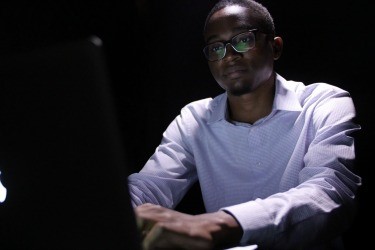We often steer clear of tedious budgets, graphs and numbers. And many times, we’re not sure where to go to access important community information. When this data becomes inaccessible and hard to understand, it creates a problem for civic engagement.
FIU student Gregory Johnson recognized this problem in Miami-Dade County and had a solution: coding.
In August of 2015, Johnson and collaborator Mauro Perez created an interactive Miami Graph through their volunteer work at Code for Miami (a brigade of Code for America) to help remove a few of the obstacles preventing civic engagement.
The Code for Miami project helps citizens access and visualize the Miami-Dade County 2016 budget proposal in an easy-to-understand graph. By swiping the mouse over a bar on the graph, users can see which sector and what percentage of the budget each bar represents.
The graph is also open-source, meaning its original code, or computer language, is available and accessible to the community.
Miami Graph: Visualize city data
“The Miami Graph is about connecting the city to the policies that affect them, getting more people to rally around policy and voice their opinions,” Johnson says. “It makes it simpler by showing people, this is what’s happening in your neighborhood.”
Johnson, the recipient of the 2015 Young Social Entrepreneur of the Year award from Casimiro Global Foundation as well as this year’s Young Innovator of the Year award from Miami Caribbean Code, says creating a website and the graph is only the beginning.
“What we’ve learned is – yes, people do care what’s going on in the city,” Johnson says. “We’ve got people that have looked at the graph, and they’ve really liked the graph. It could be someone in real-estate or in tech, and they appreciate the fact that they can look at information from where the most money is going to where the least amount of money is going.”
Future plans for more user engagement include adding polling questions and a forum to the graph website.
“Gregory represents the spirit of our students in a way that is so quintessentially FIU,” says Saif Ishoof, vice president of Engagement and one of Johnson’s mentors. “I see Gregory as a curious entrepreneur and builder who seeks to make his community better through his talent and tenacity. Gregory’s passion and fluency in diverse and complex areas like big data analytics or the realities of the digital divide, demonstrates the essence of what it means to go beyond possible.”
A budding community activist, Johnson sees coding and programming as another tool that can help solve problems community members face.
During the fall of 2015, he volunteered at Genius Factory teaching kids in Overtown about STEAM (Sciences, Technology, Engineering, Arts, and Mathematics) programming.
“To show the kids how a computer works is really important,” Johnson says. “To see those kids who know how to use computers and Minecraft and then teach them how Minecraft is made, that’s what drives the kids.”
In addition, he co-organizes Sales Genius Events with one of his mentors – Riyaad Seecharan, managing director of Tesser Health. The events are about bringing in sales experts to teach important sales skills to representatives from tech companies who want to boost their sales.
The proceeds from those events go to the Genius Factory to help kids in the community.
Johnson, a finance major in the College of Business, has also tapped into a connection between finance and coding. Much of what is happening with finance today is tied with technology from Excel Sheets to Wall Street – anything that helps people learn how the market is moving.
“Someone that understands how to code and understands technology can get a good job. With the skills of technology and programming, the kid in Overtown or the kid anywhere, can take themselves and their families out of poverty,” Johnson says.
He adds: “Technology is where the future is heading. I’m someone in finance, studying the market. That’s why I’m passionate about sharing that and using my time to help make Miami a better place. ”
Do you have an interest in working on solving a problem in the world? Have you already started working on a solution? Or know someone who has? Share your story with Global Learning.
This post “Student programmer uses coding to solve community problems” was originally published on FIU News.

